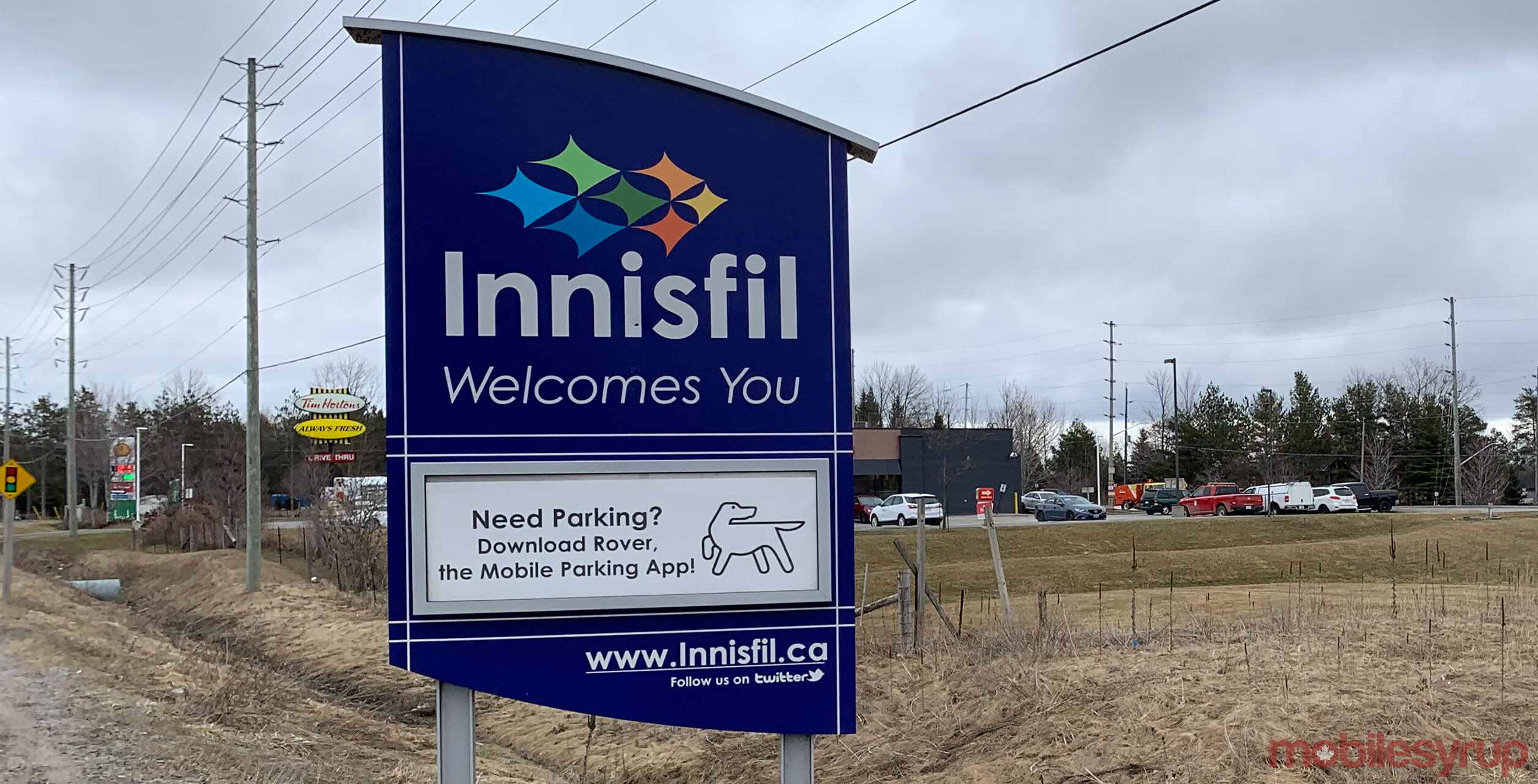
The Town of Innisfil is bustling with traffic at 9:30am.
Except, there are no taxis, janky busses, or subways. There definitely aren’t any streetcars packed to the brim, either. There are only Ubers. Ubers are everywhere and you can’t tell them apart from the other cars trying to get to work or to school.
Jean Theriault, a 64-year-old retired international sales consultant, has been an Uber driver since the ridesharing service became part of the town’s local public transit system in 2017.
“At the beginning when Uber first came, there would be mornings where no drivers were available. So as soon as a driver showed up and he has to take someone to the Go station, someone else wants a ride but they’ll have to wait a bit longer. But that’s non-existent now. Now it’s available 24-hours a day.”
Theriault is part of the 66.5 percent of Innisfil residents between the ages of 15 and 64 living in the town, according to the 2016 census.
He used to live in Toronto, but as he put it, he “kept moving north like everyone” in the city. His daughter goes to school in Barrie, which is a 15-minute drive from Innisfil.
“[Bringing Uber] was a great opportunity. I’m retired. Without it, I have no idea what I would be doing at this point,” Theriault said, smiling, as he drove to the town’s IdeaLab, which is also the library.
Innisfil is as big as Mississauga, Ontario and is located about an hour north of Toronto. It has a small population of 37,000 people that live in different pockets.
The town is a mish-mash of expansive farmland, modern, developed residences and shopping squares. As you’re driving by a massive farm complete with grazing cows, you’ll spot what looks like a brand new Starbucks, Pizza Nova, and Freshii, located right nearby.
So how did this town decide to make Uber its primary public transit system? Further, how did it make the decision to add cryptocurrency as a form of payment towards property taxes?
The answers are found in the way Innisfil intends to become the next potential hub for 5G technology and evolve into one of Canada’s first smart cities.
Adopting technology means making a cultural change
Sitting in Theriault’s back seat, Innisfil’s Mayor Lynn Dollin explains that embracing a cultural change means adopting innovative technology, but in order to do that the town needed to become “courageous.”
“No one person makes anything happen. We have nine councillors, but they are courageous councillors. And even the council that came before me. You have to be courageous, this isn’t like any other business where you can say ‘oops well that didn’t work let’s move on to something else.’”
It’s important to note that Uber was established in the town before Dollin became the mayor in 2018. From 1994 to 2014 she was a councillor and from 2016 until she was elected mayor she was the president of the Association of Municipalities of Ontario.
She explained that most municipalities are risk averse because the town is accountable to taxpayers and if its elected officials make the wrong decision “we would get booted out of our job.”
“We can react quicker to things, it’s easier to convince a council of nine than one of 30 to go in a certain direction,” Dollin said.
That’s the case with most levels of government. If you screw up handling cash, do something inappropriate, or don’t act in the public’s interests, you may as well say bye-bye to getting re-elected.
Innisfil is free to make these changes because there’s less bureaucracy as well as fewer layers of government to go through to make final decisions, she said.
“We can react quicker to things, it’s easier to convince a council of nine than one of 30 to go in a certain direction,” Dollin said.
Part of that cultural change Dollin is talking about is communicating to residents and making them understand why the town should adopt certain new technologies.
“We want people who live in all parts of Innisfil to feel like they belong and to feel that no one has been left behind,” she said.
“If you tell a senior citizen that if they use their smartphone then they can see their grandchildren and speak to them who live in Australia or British Columbia or anywhere in the world, that’s a huge incentive for someone.”
Convincing people that Uber can be public transit is hard: Dollin
But, technically speaking, Dollin explained that Innisfil hired a transportation consultant in 2016 to figure out how to transport people from different pockets of the town.
The consultant had suggested getting two busses that ran up and down the main street, it would also mean that residents would begin to see a two percent hike in their property taxes to pay for the service.
“This isn’t your ordinary library. There is no old lady with a bun that’s going to shush at you,” Dollin said.
“You’re basically asking a whole bunch of residents to pay two percent more on their property taxes for services that they may never use,” she said.
Uber came up as an idea and the relationship started from there. It wasn’t easy because Dollin explained she and several others had to try and convince people who weren’t used to Uber as a form of public transit.
The base fare to use Innisfil’s public transit is $4 CAD.
As Dollin got out of the Uber and walked into the IdeaLab, she explained the location was one of four in the town. The IdeaLab is far from your traditional library; it’s fully equipped with staff who teach residents about the latest technology and how to be more tech savvy.
“This isn’t your ordinary library. There is no old lady with a bun that’s going to shush at you,” Dollin said.
Dollin walked to the back of the IdeaLab and into a boardroom. She’s followed by the town’s chief administrative officer, Jason Reynar, and the library’s CEO, Erin Scuccimarri.
‘Boxing the risk’ by spending only $100,000 instead of $10 million: Jason Reynar
Reynar spoke about that cultural change Dollin and the rest of the city’s staff are trying to create.
He said he was responsible for “developing that culture where people who work for the municipality feel comfortable coming up with new ideas.”
“It’s about boxing the risk,” Reynar said.
“That’s why we do pilot projects. We do trials. We test out these kinds of innovative solutions and with the expectation that it may not work and we are going to learn from it, and we are going to iterate it and make it better the next time. Or we move onto something else and we do that fairly quickly.”
“We put the risk in a box and say ‘what’s the worst that can happen?’,” Reynar said.
Reynar said the town is very open and creates a “safe space” where people know what is going on and know when to expect failure.
“We put the risk in a box and say ‘what’s the worst that can happen?’,” Reynar said.
When the idea of Uber was brought up, Reynar said the town decided to invest only $100,000 instead of $10 million, making the case to pilot Uber more manageable.
“We managed the risk that way, and I think that’s what helps create a space where people can feel comfortable trying those things,” Reynar said.
From Uber to Cryptocurrency
Dollin said that after the town launched Uber, many companies approached the council to see if their ideas could be adopted.
“They don’t all make it to the council table,” Dollin said gratefully, adding she was impressed by the number of companies that want to invest in Innisfil’s culture.
“We love being a sounding board for all these great ideas, and the next one was Coinberry,” she said.
The company signed a partnership with Innisfil to provide the service as a one-year pilot project. Innisfil is now the first in Canada to accept cryptocurrency as a form of property tax payment.
Reynar noted that the form of payment is added onto existing payment methods, meaning residents can still pay their property taxes with credit cards, cash or checks. Reynar said this was where the future was going.
In fact, Twitter’s CEO Jack Dorsey told MobileSyrup that investing in smaller towns is easier especially with technology like cryptocurrency.
5G and becoming a smart city
But what Innisfil really wants, is to be a part of the movement adopting 5G technology and reimagining the town as a smart city hub.
So is Innisfil going to start looking into 5G enabled companies? What about working towards autonomous vehicles? And becoming a smart city?
“Yes, yes, and yes, right all of the above and not because we’re interested in competing with [others]…what we do want is fast internet, fast accessible cell signal service for our community. We want to be future ready, so we want autonomous vehicles, we want to get to that stage and experiment with companies that are curious on how that interacts with an urban and rural environment because we have both,” Reynar said.
Reynar said the town has the cash but it has to be careful in terms of how it intends to deploy it, adding that it has to be able to serve the public.
“It’s a good revenue generator and creates different kinds of revenue sources and solves a public problem,” Reynar said.
But so many residents in Innisfil don’t even have Wi-Fi or high-speed internet. In fact, Reynar said some residents only have dial-up internet connections.
Reynar said the town isn’t necessarily a hotspot for big telecom companies to come and build infrastructure because it’s “capital intensive.”
As an alternative, Reynar suggested they build their own tower and get a long term lease for a signal to put on the tower.
“It’s a good revenue generator and creates different kinds of revenue sources and solves a public problem,” he said. The coverage would, in turn, help the city move toward using 5G technology, which would eventually be added on to existing infrastructure when the spectrum is available to be deployed.
Reynar added that just like it’s easier to adopt Uber and cryptocurrency, it would be much easier to bring 5G technology to the town.
“We literally have one high school and eight elementary schools. So when you talk about how to test new technology, we could change the traffic lights so they are smart traffic lights so that between drop off times at schools we actually could reroute the traffic,” he said.
“Let’s try to figure out the logistics here and then scale up,” he said.
It’s important to note that while Canada just auctioned off 600 MHz, one of the bands for 5G, it still needs to auction off other bands that will help deploy 5G. The other spectrum auctions are to take place in 2020 and 2021.
Appy Hour, skills development and a Hack Lab
So how does Innisfil bring along the nearly, if not more than 10,000 adults that are aged 50 and above to be a part of these innovative programs?
Scuccimarri, the library’s CEO, explained that the town decided to invest in rebranding the library to offer services that help residents understand the technology around them.
“We did a rebranding three years ago to be more relevant in terms of the services we were providing,” she said. “We saw ourselves as reinventing the role of the public library in the community.”
She added that the town placed a huge focus on digital literacy, technology and learning. The library not only acts as a community hub but a space where residents of all ages can come and learn, she said.
The library offers services to help adults learn about the latest programs, skills classes, and even offers what it likes to call ‘Appy Hour,’ a weekly class that lets anyone drop in with their smartphone to learn about different apps.
The library has a media lab that includes a recording studio, video cameras, floor to ceiling green screen and machines to edit.
Scuccimarri said students and seniors both use the space.
As Scuccimarri walks through the library, she shows off the Think Lab, which is where residents can take different courses.
Lorie Smith, a retired 58-year-old, sits at one of the computers in the Think Lab.
“I’m retired and bored and I need socializing,” she said. “You’re used to and it’s an everyday thing.”
Smith’s been living in Innisfil for about 30 years now and comes into the IdeaLab every week for different classes.
“It’s challenging to adapt. It’s hard, and they’re so patient and they’re so good here. I don’t feel like an idiot, to be honest, because they’re very good, every one of them,” she said.
She was learning how to make a wooden sign for her trailer, but she’s made a plethora of things with the help from the library’s staff.
“We use innovation as a process to get us to a solution that’s affordable, that’s sustainable,” Scuccimarri
Scuccimarri explains that the staff is trained to help teach everyone everything and if there isn’t something they don’t know, then they learn it.
The library also has a Hack Lab, which is where the laser printers, 3D printers and other gadgets are located. It’s also where residents can come in and learn to code.
But despite all of the innovation in the town and where its going, Reynar wanted to reiterate that the town doesn’t “innovate for innovation’s sake.”
“We’re not sitting around trying to think of the next innovative solution. We use innovation as a process to get us to a solution that’s affordable, that’s sustainable, that makes sense and we’re not afraid to experiment and be creative with that,” he said.
MobileSyrup may earn a commission from purchases made via our links, which helps fund the journalism we provide free on our website. These links do not influence our editorial content. Support us here.






